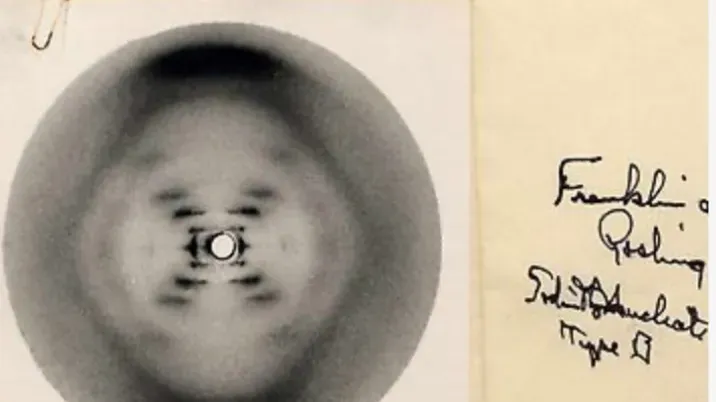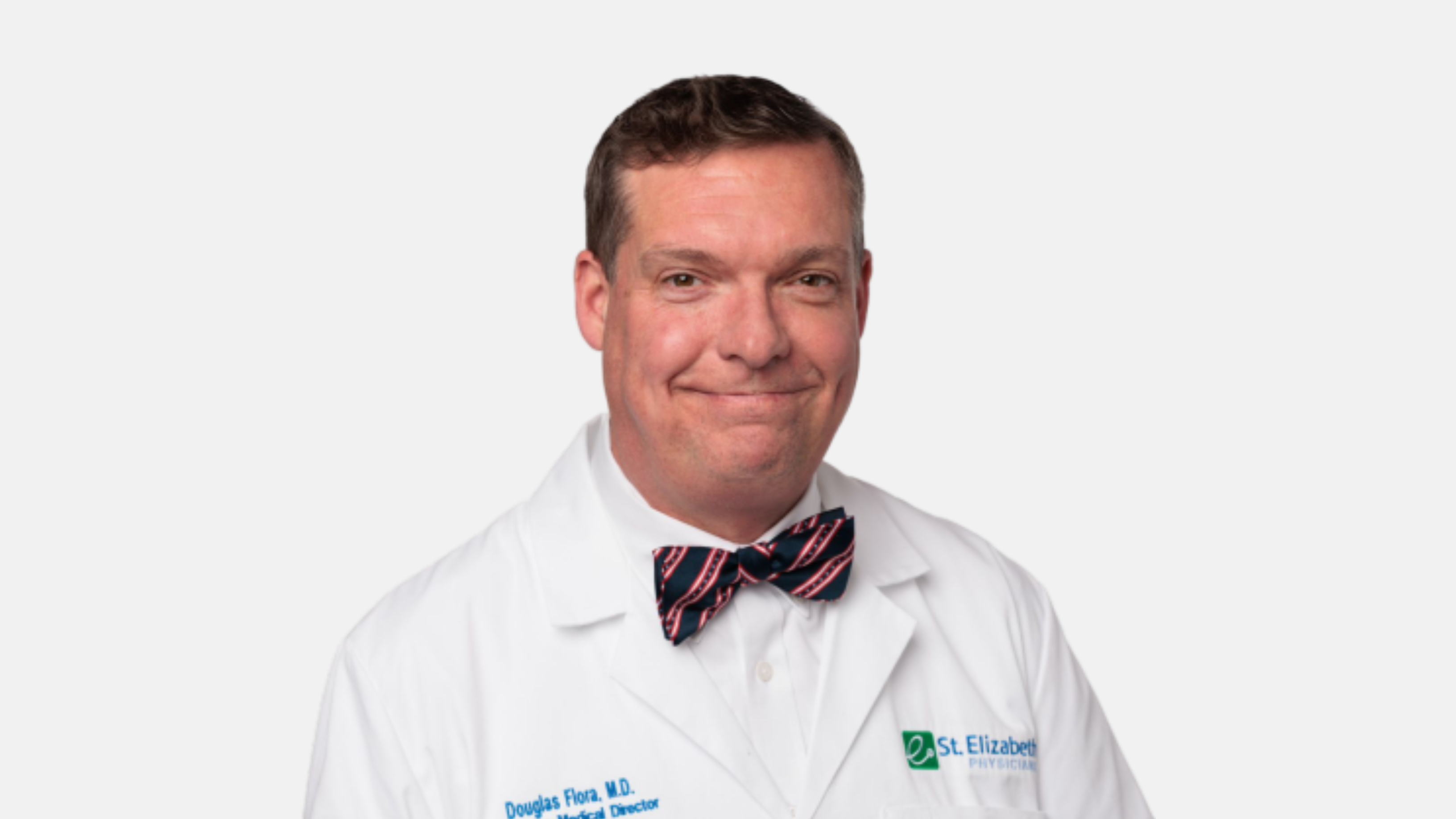Douglas Flora, Executive Medical Director of Yung Family Cancer Center at St. Elizabeth Healthcare, President-Elect of the Association of Cancer Care Centers, and Editor in Chief of AI in Precision Oncology, shared a post on LinkedIn:
”
The structure was too pretty not to be true.
– Rosalind Franklin
Picture this: It’s 1951, and the most critical puzzle in biology sits unsolved on laboratory benches worldwide. DNA – the blueprint of life itself – remains a scientific ghost. Everyone knows it exists, but no one can see its proper form.

Sound familiar?
Today, healthcare leaders face a strikingly similar puzzle. AI promises to revolutionize patient care, but most of us remain paralyzed between the magnetic pull of curiosity about what AI can accomplish and the anchoring weight of responsibility to ensure any new technology serves our patients safely and effectively. This tension creates what I call “strategic paralysis”—that peculiar state where we know we need to act but keep waiting for the perfect moment, tool, and understanding before we begin. The cure for this paralysis lies in a 70-year-old photograph and the woman who refused to let uncertainty stop her from seeing clearly.
The Ghost That Haunted Science
In 1951, DNA was biology’s most elusive quarry. Scientists could theorize endlessly about its structure, but theories weren’t facts. The race to visualize DNA’s actual form had consumed the brightest minds in science, yet the mystery remained unsolved. While her male colleagues built elaborate theoretical models and engaged in academic debates, Rosalind Franklin took a radically different approach. She believed in data over speculation, evidence over ego, and—most importantly—action over endless preparation.
Franklin had a specific problem (revealing DNA’s structure), an imperfect tool (X-ray crystallography), and unwavering discipline. She didn’t wait for better equipment or perfect conditions. She began immediately, methodically exposing DNA fibers to X-rays and capturing the resulting diffraction patterns. The work was painstaking. Each photograph required hours of precise calibration, patient exposure, and careful development. Most images revealed little. But Franklin persisted, convinced that systematic experimentation would eventually yield clarity. Then came Photo 51.
The image looked unremarkable—a pattern of dark spots and fuzzy lines against a grainy background. To most observers, it was just another blurry X-ray. But Franklin saw something others missed: the unmistakable signature of a double helix, the twisted ladder structure that would revolutionize our understanding of life. Photo 51 didn’t win Franklin immediate recognition. In fact, the image was shared without her permission and helped other scientists claim credit for “discovering” DNA’s structure. But her method—problem-focused, data-driven, and action-oriented – succeeded where pure theory failed.
Your Modern X-Ray Machine
AI serves as our contemporary equivalent of Franklin’s X-ray crystallography. Just as her technology revealed previously invisible molecular structures, AI exposes hidden patterns in complex datasets that human analysis alone could never detect. AI identifies subtle relationships between genomic markers and treatment responses. It predicts patient deterioration hours before clinical symptoms appear. It spots diagnostic anomalies in medical images that even expert radiologists might miss. Most importantly, it transforms vast amounts of seemingly random data into actionable insights.
But here’s Franklin’s first crucial lesson: the time to engage with transformative technology isn’t when it’s perfectly refined—when you have a burning problem that needs solving.
The Franklin Method: Three Essential Steps
Franklin’s approach to cracking the DNA code is a blueprint for AI mastery. Her method consisted of three interconnected phases:
Step 1: Start With Your Problem, Not the Technology
Franklin didn’t begin by mastering X-ray crystallography theory. She started with DNA’s structural mystery and asked: “What tool might help me see what’s currently invisible?”
Your AI journey should follow the same logic. Don’t start by enrolling in machine learning courses or studying algorithm architectures. Instead, identify the specific clinical challenge that keeps you awake at night:
- Is there a diagnostic pattern you suspect exists but can’t prove?
- Do you have patient outcome data that seems to contain hidden insights?
- Is there a workflow inefficiency that costs precious time every single day?
- Are there communication gaps in your care coordination that you know could be bridged?
Choose one problem. Make it specific. Make it personal. This becomes your North Star—every AI exploration should advance your understanding of this challenge.
Step 2: Embrace Imperfect Tools and Imperfect Knowledge
Franklin’s X-ray equipment was primitive by today’s standards, and her understanding of crystallography was incomplete. However, she proceeded anyway, learning through systematic experimentation rather than theoretical mastery.
This is perhaps the most counterintuitive aspect of the Franklin Method: you don’t need to understand AI deeply before you can use it effectively. Start with accessible tools. Many hospitals offer AI platforms for clinical decision support, diagnostic assistance, or workflow optimization. These tools aren’t perfect, and your initial understanding will be limited. That’s not only acceptable—it’s optimal.
Your education emerges from hands-on experimentation. As you apply AI tools to your specific problem, you’ll naturally develop intuition about their strengths and limitations. This practical knowledge proves far more valuable than theoretical understanding gained in isolation.
Step 3: Develop Systematic Discipline
Franklin’s genius wasn’t in making lucky guesses but in her methodical, almost artistic commitment to rigorous process. She captured hundreds of images, carefully cataloged each result, and systematically refined her technique.
Your AI exploration requires similar discipline, but adapted for clinical environments:
- Document everything: Record which tools you try, what parameters you adjust, and what results you observe
- Start small and iterate: Begin with simple applications before attempting complex implementations
- Measure outcomes rigorously: Track both successes and failures with equal attention
- Share your learning: Discuss results with colleagues, data scientists, and other stakeholders
This systematic approach transforms random experimentation into genuine expertise development.
The Two Pillars of AI Confidence
Franklin’s story illuminates two psychological principles that directly address the barriers most healthcare leaders face when approaching AI:
Pillar 1: Trust Your Process, Not Your Impostor Syndrome
Franklin worked in a scientific environment that consistently undervalued her contributions. Male colleagues dismissed her methodical approach as “tedious” and her careful documentation as “excessive.” Yet her confidence remained unshakeable—not because she possessed natural arrogance, but because she trusted the quality of her systematic process.
This distinction is crucial for healthcare leaders entering the AI space. Impostor syndrome whispers that you don’t know enough, haven’t studied enough, and aren’t technical enough to succeed with AI. However, confidence built on process rather than knowledge provides a solid foundation.
When you’ve systematically explored an AI tool’s capabilities, carefully tested its performance on your specific problem, and rigorously documented the results, your confidence becomes grounded in irrefutable evidence rather than wishful thinking. You may not understand the underlying algorithms, but you know—deeply and personally—how the tool performs in your environment with your data on your problem.
Pillar 2: Know Your Limits, Accelerate Through Collaboration
Franklin was brilliant within her domain of expertise, but she didn’t work in isolation. She operated within a broader ecosystem of scientists pursuing complementary questions. Her crystallographic work provided one essential piece of a larger puzzle.
Your AI journey follows the same collaborative pattern. You don’t need to become a data scientist, but you do need to find data scientists. You don’t need to master machine learning, but you do need to partner with people who have.
The fastest path to AI competency runs through strategic collaboration:
- Internal partnerships: Identify data scientists, IT specialists, or quality improvement teams within your organization
- Cross-departmental exploration: Partner with colleagues in different specialties who face related challenges
- External networks: Connect with healthcare leaders at other institutions who are experimenting with similar AI applications
Share your clinical problem and allow their technical expertise to merge with your domain knowledge. The most successful healthcare AI implementations emerge from this intersection of clinical insight and technical capability.
The Moment of Truth
Franklin’s Photo 51 represented more than a scientific breakthrough—it demonstrated that systematic, problem-focused experimentation could make the invisible visible. Her approach worked not because she possessed superior theoretical knowledge but because she refused to let uncertainty prevent action.
Today’s healthcare leaders face their own “Photo 51 moment.” The patterns hidden in your data, the insights buried in your workflows, and the solutions to your most persistent challenges are all waiting to be revealed through the same disciplined approach Franklin pioneered seven decades ago. The question isn’t whether you’re ready for AI. The question is: what do you wish you could see clearly in your practice right now?
Your answer to that question becomes your starting point. Everything else—the tools, the training, the confidence—follows naturally from taking that first systematic step toward making the invisible visible.
The Legacy of Action
Rosalind Franklin never lived to see the full impact of her work. She died in 1958, four years before Watson, Crick, and Wilkins received the Nobel Prize for discoveries built upon her foundation. But her legacy endures in every genetic therapy, every DNA test, every biological insight that followed. Her true gift to science wasn’t Photo 51 itself—it was the method she used to capture it: problem-focused inquiry, systematic experimentation, disciplined documentation, and collaborative knowledge-building.
These same principles, applied with the same rigor to AI exploration, can transform your understanding of artificial intelligence and your ability to harness its power for patient care.The safe combination to AI success isn’t a secret algorithm or proprietary technique. It’s a 70-year-old method, tested and proven, waiting for healthcare leaders brave enough to stop waiting for perfect conditions and start experimenting with purpose.
Your Photo 51 moment is coming. The only question is whether you’ll be ready to recognize it when it appears.”
More from Douglas Flora on OncoDaily.
